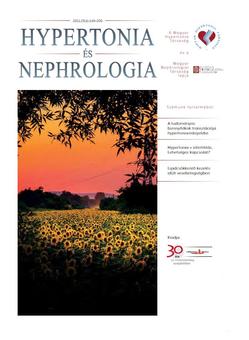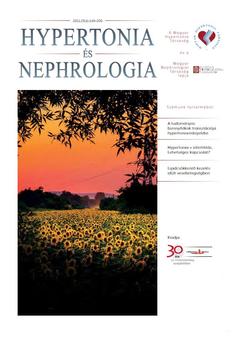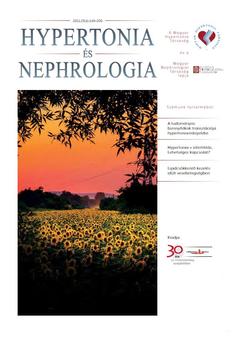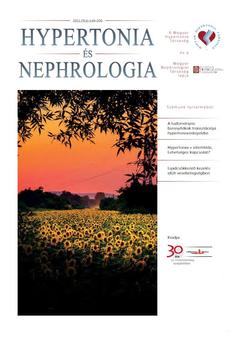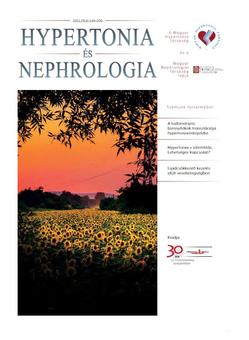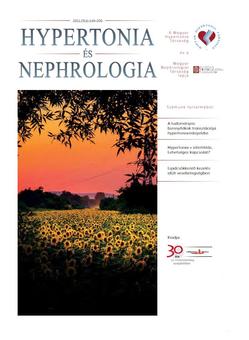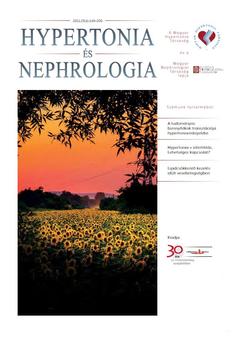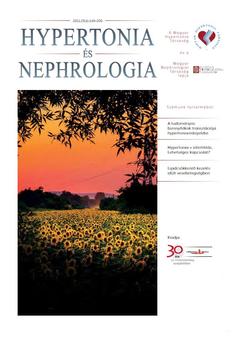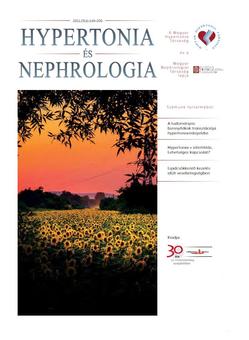The eLitMed.hu medical portal uses computer cookies for convenient operation. Detailed information can be found in the Cookie-policy.
Hypertension and nephrology - 2021;25(04)
Content
[The translation of scientific evidence into arterial hypertension guideline (ESC/ESH Guidelines for the management of arterial hypertension): certainty and uncertainty in decision-making]
[Clinical practice guidelines summarise the existing knowledge of a given medical field, helping healthcare professionals to make medical conscious medical decisions. Our present study aims to analyse the Arterial Hypertension (AH) Guideline issued by the ESC/ESH to determine what overall certainty it has for making effective decisions.]
[May measurement month: analysis of the Hungarian results of years 2017 and 2019]
[Cardiovascular (CV) diseases are not only the leading causes of mortality in Hungary, but also the mortality rate is excessively high compared with the average of European Union, so screening programs identifying subjects with elevated blood pressure (BP) is of utmost importance. May Measurement Month (MMM) is an annual global initiative which began in 2017 aimed at raising awareness of high BP. Hungary, through the Hungarian Society of Hypertension has joined the campaign of MMM from the beginning. The results of years 2017 and 2019 are presented in this paper. ]
[Hypertension-infertility. Can be any connection between them?]
[Summary – Considering the pathomechanism, the risk factors, as well as the environmental and toxic effects, some associated illnesses, unhealthy life-style habits in the background of hypertension and infertility, significant overlapping can be found. The question arises; does play any role the hypertension in the development of infertility? In this article the author review the connection between the hypertension and infertility. ]
[Lipid-lowering treatment in chronic kidney disease in light of new studies and recommendations]
[Summary – Chronic kidney disease (CKD), which affects 10-14% of the population, dramatically increases the incidence and severity of cardiovascular (CV) disease, leading to death in the majority of patients before kidney replacement therapy. The current CV risk scorecards in CKD significantly underestimate the real risk and are therefore not applicable. For CV risk assessment it is recommended to use the combined GFR/proteinuria table also, which is used for CKD classification, was also adopted by the Hungarian CV Consensus Conference last year. The benefit of cholesterol- lowering treatment has also been demonstrated in CKD, and a 1 mmol/l reduction in LDL-c, as in the general population, reduces the incidence of major CV events by 20%. Recent clinical trials have clearly indicated that the lower the LDL-c values achieved, the lower the risk of future CV events, and therefore the new recommendations have tightened the LDL-c values to be achieved. ]
[The treatment of patients with hypertension and HFpEF. The role of MRA (mineralocorticoid receptor antagonist), ARNI (angiotensin receptor blocker – neprilysin inhibitor), and the SGLT-2 inhibitors ( sodium-glucose-cotransporter-2 inhibitors)]
[The prevalence of the symptomatic form of heart failure with preserved ejection fraction (HFpEF) often causes therapeutic problem for physicians. Hypertension is one of the most frequent concomitant illness among many comorbidities. Therefore its treatment, care and monitoring needs special attention, as well. Newer therapeutic options will be reviewed in the light of the results of the studies concerning treatment of HFpEF and high blood pressure.]
[Facts and misbeliefs regarding thiazides and thiazide-like diuretics]
[Diuretics are listed in hypertension guidelines as part of first-line treatment options unvariably. A lot of discussion has been directed at side effect profiles and as a result, has created a perhaps disproportionate fear of the metabolic effects and potential increased risk of skin cancer that can be associated with diuretics. Data, however, show that the risk of a clinically meaningful change in laboratory parameters is very low, their carcinogenic potential is not fully proved, whereas the benefits of volume control and natriuresis are high and the reductions in morbidity and mortality are clinically significant. Moreover, several international guidelines have started making a distinction between thiazides (hydrochlorothiazide) and thiazide-like (chlorthalidone, indapamide) diuretics; and some of them now recommend longer acting thiazide-like diuretics. Based on this differentiation chlorthalidone and indapamide may need to be subdivided further into separate classifications. Nevertheless, it’s worth to know that indapamide exists in two formulation with ]
[Membranous glomerulopathy: two cases]
[Summary – Membranous glomerulopathy (MGP) is the most frequent cause of nephrotic syndrome in adults. It is classified as a primary autoimmune disease or secondary MGP due to malignancies, autoimmune diseases, infections or adverse drug reactions. Here we present two cases of MGP.]
1.
Clinical Neuroscience
Is there any difference in mortality rates of atrial fibrillation detected before or after ischemic stroke?2.
Clinical Neuroscience
Factors influencing the level of stigma in Parkinson’s disease in western Turkey3.
Clinical Neuroscience
Neuropathic pain and mood disorders in earthquake survivors with peripheral nerve injuries4.
Journal of Nursing Theory and Practice
[Correlations of Sarcopenia, Frailty, Falls and Social Isolation – A Literature Review in the Light of Swedish Statistics]5.
Clinical Neuroscience
[Comparison of pain intensity measurements among patients with low-back pain]1.
Clinical Neuroscience Proceedings
[A Magyar Stroke Társaság XVIII. Kongresszusa és a Magyar Neuroszonológiai Társaság XV. Konferenciája. Absztraktfüzet]2.
3.
Journal of Nursing Theory and Practice
[A selection of the entries submitted to the literary contest "Honorable mission: the joys and challenges of our profession" ]4.
Journal of Nursing Theory and Practice
[End of Life and Palliative Care of Newborns in the Nursing Context]5.
Journal of Nursing Theory and Practice
[Aspects of Occupational Health Nursing for Incurable Patients ]